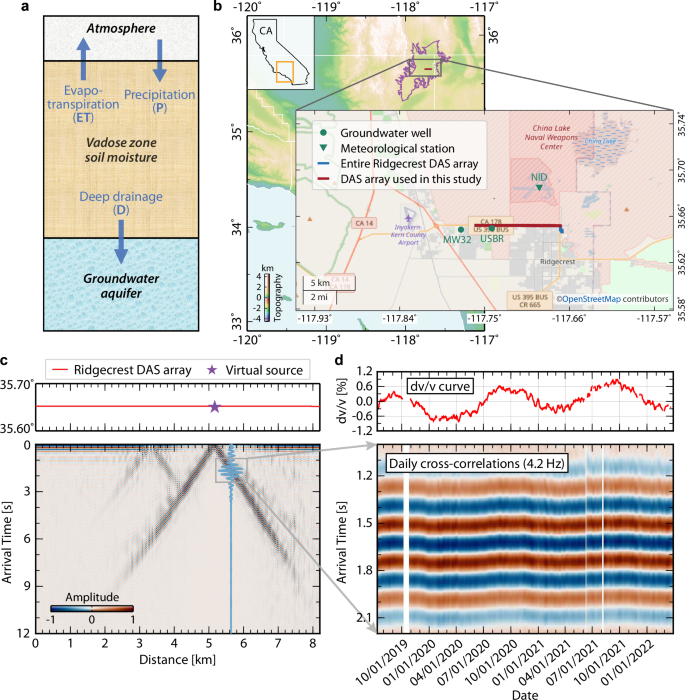2024-07-29 カリフォルニア大学バークレー校(UCB)
◆UCバークレーの研究者チームは、Cyclone Global Navigation Satellite System (CYGNSS) のLバンドマイクロ波を利用して、厚い雲や木々の下に隠れた水を検出する新しい方法を開発しました。この技術、Berkeley-RWAWCは、陸地と水域を区別するコンピュータビジョンアルゴリズムも組み込んでいます。
◆研究では、Berkeley-RWAWCを使って、熱帯地方の水の動態を示す詳細な月次マップを作成しました。このデータは、洪水や干ばつへの対応を助けるため、特に気候変動の影響を受けやすい熱帯地域のコミュニティにとって重要です。また、この技術は洪水予測や温室効果ガス排出量のモデル化にも役立ちます。
<関連情報>
- https://engineering.berkeley.edu/news/2024/07/new-computer-vision-based-system-monitors-seasonal-dynamics-of-tropical-water/
- https://agupubs.onlinelibrary.wiley.com/doi/full/10.1029/2024WR037060
バークレー-RWAWC:CYGNSSベースの新しいウォーターマスクが熱帯の季節的ダイナミクスのユニークな観測結果を発表 Berkeley-RWAWC: A New CYGNSS-Based Watermask Unveils Unique Observations of Seasonal Dynamics in the Tropics
Tianjiao Pu, Cynthia Gerlein-Safdi, Ying Xiong, Mengze Li, Eric A. Kort, A. Anthony Bloom
Water Resources Research Published: 09 July 2024
DOI:https://doi.org/10.1029/2024WR037060

Abstract
The UC Berkeley Random Walk Algorithm WaterMask from CYGNSS (Berkeley-RWAWC) is a new data product designed to address the challenges of monitoring inundation in regions hindered by dense vegetation and cloud cover as is the case in most of the Tropics. The Cyclone Global Navigation Satellite System (CYGNSS) constellation provides data with a higher temporal repeat frequency compared to single-satellite systems, offering the potential for generating moderate spatial resolution inundation maps with improved temporal resolution while having the capability to penetrate clouds and vegetation. This paper details the development of a computer vision algorithm for inundation mapping over the entire CYGNSS domain (37.4°N–37.4°S). The sole reliance on CYGNSS data sets our method apart in the field, highlighting CYGNSS’s indication of water existence. Berkeley-RWAWC provides monthly, low-latency inundation maps starting in August 2018 and across the CYGNSS latitude range, with a spatial resolution of 0.01° × 0.01°. Here we present our workflow and parameterization strategy, alongside a comparative analysis with established surface water data sets (SWAMPS, WAD2M) in four regions: the Amazon Basin, the Pantanal, the Sudd, and the Indo-Gangetic Plain. The comparisons reveal Berkeley-RWAWC’s enhanced capability to detect seasonal variations, demonstrating its usefulness in studying tropical wetland hydrology. We also discuss potential sources of uncertainty and reasons for variations in inundation retrievals. Berkeley-RWAWC represents a valuable addition to environmental science, offering new insights into tropical wetland dynamics.
Key Points
- Vegetation and clouds can obstruct the view of waterbodies, making accurate, seasonal mapping difficult
- This new CYGNSS-based product combines L-band microwaves with computer vision to produce quasi-global monthly maps of waterbodies
- The product shows greater seasonal and interannual variability than other data sets for new insights into tropical hydrological processes
Plain Language Summary
The UC Berkeley Random Walk Algorithm WaterMask from CYGNSS (Berkeley-RWAWC) is a new data product developed to better monitor areas that are hard to observe due to thick vegetation and clouds, such as tropical regions. Using data from the Cyclone Global Navigation Satellite System (CYGNSS), an 8-satellite constellation, Berkeley-RWAWC has more frequent data collection compared to single-satellite systems. This allows mapping of flooding or water accumulation with improved accuracy over time, even in clouds-prone and overgrown areas. Berkeley-RWAWC spans from 37.4° North to 37.4° South and consists of monthly inundation maps at approximately 1 km by 1 km resolution since August 2018. The method places the greatest emphasis on CYGNSS data indications of where is the water, making it different from others. In this paper, we explain how we made the maps, and compare them with other data sets in four different areas: the Amazon Basin, the Pantanal, the Sudd, and the Indo-Gangetic Plain. Our comparisons show that Berkeley-RWAWC is better at showing how water changes with the seasons, which is useful for understanding tropical wetland water cycles. Berkeley-RWAWC is publicly available and can become an important new resource for studying our planet, especially in the study of patterns in tropical wetlands.


